Babbitt Column | A Brief History of Blockchain: Where does the blockchain come from and win the Nobel Prize?
The blockchain in the hot discussion is the ins and outs? Why decentralize? What is the relationship with encryption? Why are you entangled with cryptocurrency? Is there a Nobel Prize? This article is a brief history of the blockchain condensed version.
World War II and cryptography

In the Second World War, radio waves were widely used in military communications. How to decrypt and encrypt military secrets in the public radio waves received and transmitted, becoming a battlefield without smoke. In 1936, Nazi Germany developed a machine-compiled encryption system, code-named Enigama (the fan). Hitler believed that Enigama could not be cracked by any country and used it for military secret information communication. The United Kingdom Military Intelligence Division of the Allies has set up hundreds of password deciphering centers, and has convened a large number of British and American law scientists, such as the British mathematician Turing. After five years of unremitting efforts, he finally developed a deciphering machine, codenamed "Bomb." Relying on such a weapon, the Allies seized the opportunity in the next few decisive wars and finally won the full victory of World War II. (The film "Enigama Password Love" is adapted from this event)
Post-war cryptography

- Jia Nan submits the prospectus to the SEC: from the mining giant to the leader of the AI chip
- Blockchain station upwind, the industry warns of the risk of issuing coins
- How many blocks of the blockchain company have a daily limit of more than 100 in the “chain”?
The Second World War promoted the solid development of cryptography and cultivated a large number of excellent cryptography talents and technologies. After World War II, Western governments realized the importance of cryptography and established official information security agencies, such as the National Security Agency NSA and the UK's National Communications Headquarters, GCHQ, which absorbed a lot of cryptography talents to study more powerful encryption and Decryption technology. Public Key Cryptgraphy, which is now almost ubiquitous on the Internet and used by everyone, was made by cryptographers James H. Ellis and Clifford Cock, who worked at the National Communications Headquarters in the UK in the early 1970s. invent. Schools and research institutes in various countries have also begun to conduct cryptography research. The University of California, Berkeley can be described as a hall in this field. It has cultivated many predecessors in the field of cryptography, the most prominent of which is to lay the whole cryptography, blockchain, digital currency field. The basic cowman David Chaum.

In 1982, David Chaum graduated with a Ph.D. in Computer Science from the University of California, Berkeley. He is a doctoral thesis. "How do mutual suspicion organizations establish and maintain a trusted computing system? Computer Systems Established, Maintained and Trusted by Mutually Suspicious Groups." The idea of a blockchain was proposed. In the following years, David Chaum sneaked into digital signatures, anonymous communications, and anonymous digital currencies. In 1983, he published a pioneering work on digital currency: "Digital currency is better than banknotes. Numbers Can Be a Better Form of Cash than Paper." In 1989, DigiCash was founded to launch the world's first cryptocurrency ecash in the strict sense. Unfortunately, the company went bankrupt in 1998.
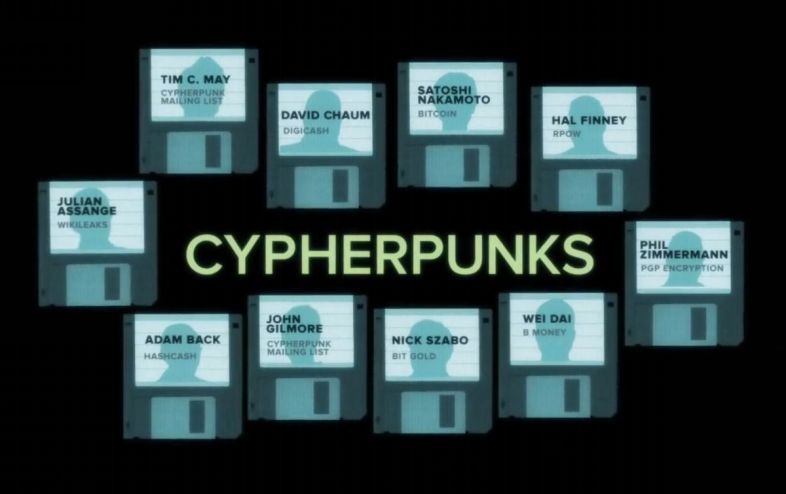
David published in 1985, "A safe, unrecognized, transactional system that makes the government system dwarf," in his article on cryptography, blockchain, and digital currency. The research results are combined to propose a set of information and currency transmission systems to protect personal privacy for national surveillance. His research inspired many cryptographers, mathematicians, computer scientists, and geeks who hated government and corporate infringement of personal privacy. This group of people naturally admire personal freedom to hate government regulation, especially in the 1980s when personal computers began to spread, and the Internet has taken shape. They want to send information on the Internet without being seen by the government, just like World War II. When Germany sent military intelligence, it did not want to be known by the Allies. They got together and set up a mysterious loose organization of Cypherpunk. The members attracted a large number of cattle, such as the famous Vickers Decryption founder Assange, and the founder of Bitcoin, the mysterious Nakamoto.
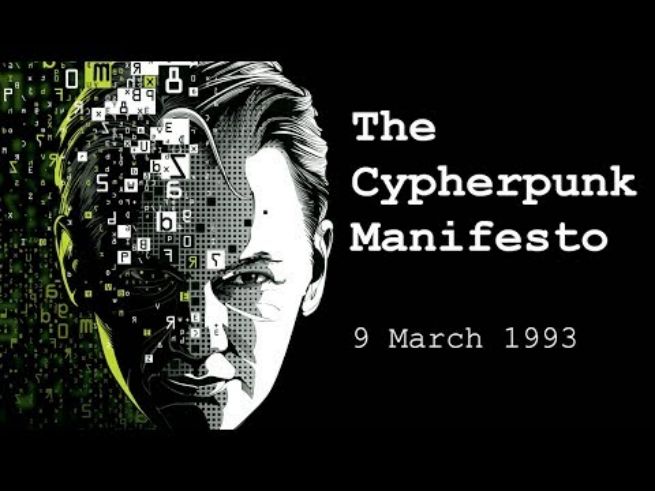
The purpose of Cypherpunk is to protect personal privacy with encrypted cryptography. They try to use encryption technology to achieve a certain balance between privacy and privacy. The declaration they organized was written in 1993 by Eric Hughes, a genius mathematician at the University of California, Berkeley. The privacy statement is very inter-generational, and some of the ideas in our information society are worth considering:
Nakamoto Satoshi and Bitcoin
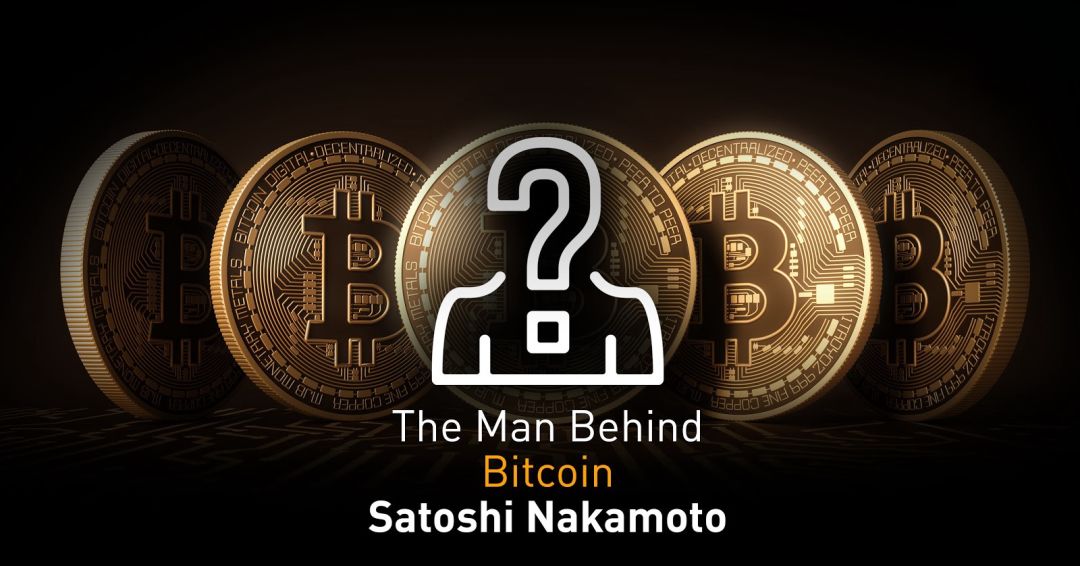
The creation of Bitcoin by Nakamoto is a great initiative and the greatest practice of the blockchain to date, but the blockchain technology was not invented by him. Although David Chaum first proposed the blockchain prototype, but the technology was not mature at the time, the blockchain prototype was not successfully applied after 26 years. The maturity of blockchain technology is attributed to two groups of scientists. In the 1990s, computers and the Internet prevailed, and digital files gradually replaced paper documents. How to ensure the authenticity and reliability of digital files has become the subject of computer experts and cryptographers. In 1991, two cryptography professors, Stuart Haber and W. Scott Stornetta, invented the time-stamping timestamp chain mechanism to ensure that digital files are authentic and unchangeable. But the chain has, how can the file be placed? There is always one chain that can only accept one file. In 1992, Bayer, Haber and Stornetta used the Markle tree data structure proposed by Ralph Merkle in 1974 to allow a large number of files to be concentrated in one block, solving the problem of file storage size.

All is ready except for the opportunity. The blockchain technology is mature, but it takes an opportunity to enter the social practice scene from the academic research of scientists. The fuse that ignited this process was the financial turmoil of 2008-09. In order to save the market, governments of various countries spend a lot of money on taxpayers to help banks that have gone bankrupt because of greed, while letting central banks put watermarks on banknotes. These behaviors challenge cypherpunk's anarchist ideals, provoke the anger of Cypherpunk members, and speed up the process of members creating a payment system that does not rely on the financial system. Organization member Satoshi Nakamoto Satoshi Nakamoto, a fusion of predecessors' blockchain and cryptography techniques, learned the lessons of the previous cryptocurrency failure, and released the Bitcoin white paper on October 31, 2008: "Bitcoin: a peer-to-peer electronic currency The system Bitcoin: A Peer-to-Peer Electronic Cash System has opened up the era of encrypting digital currency and bringing blockchain technology to the world. On January 3, 2009, the Bitcoin system was launched, and Satoshi Nakamoto dug out the first block of Bitcoin, and noted in the block: "January 3, 2009, the British Times Daily, the Ministry of Finance is about to open to the bank The second bailout, expressing his ridicule of the traditional financial system.
V God and Ethereum

The development of bitcoin is fast. It turned out to be a simple encrypted peer-to-peer payment system. I did not expect to attract 20 million people worldwide of encrypted digital currency users in just 10 years. The price of the currency has risen from a penny to a maximum of 18,000 US dollars. The focus and research of blockchain technology. Bitcoin later produces a wide variety of encrypted digital currencies, including forked coins that are forked from bitcoin, as well as other innovative currencies. The most striking of these is the second largest encrypted digital currency, Ethereum.
In November 2013, the 19-year-old genius Russian prodigy Vitalik announced the Ethereum white paper in San Francisco, opening the “blockchain 2.0” era. In 2014, Vitalik officially established the Ethereum Foundation and conducted the first ICO to raise more than 3,000 bitcoins, with a market value of $18 million. Since then, tens of thousands of projects have been issued on the Ethereum, opening the ICO frenzy. Ethereum's token ETH has also soared from US$1 to US$1,506, becoming the world's second-largest digital currency with a market capitalization of US$18 billion, second only to Bitcoin. Vitalik himself is also called the "V God" by the blockchain. The reason for Ethereum's success is that it is more powerful than Bitcoin. If bitcoin is a hard disk plus memory, then Ethereum is a computer with a CPU. The Bitcoin network is a distributed database, and Ethereine goes one step further by not only using the blockchain as a distributed data store, but also using smart contracts to perform computational functions. Therefore, the application of thousands of blockchains (commonly known as distributed application Dapp) can be developed and run on the computer of Ethereum, forming a rich Ethereum ecosystem. Ethereum is also well-deserved, and by far the most successful public chain project. The emergence of Ethereum has also greatly promoted the application of blockchain technology, and at the same time led to the development of other public chains.
Stabilizing coins become dark horses
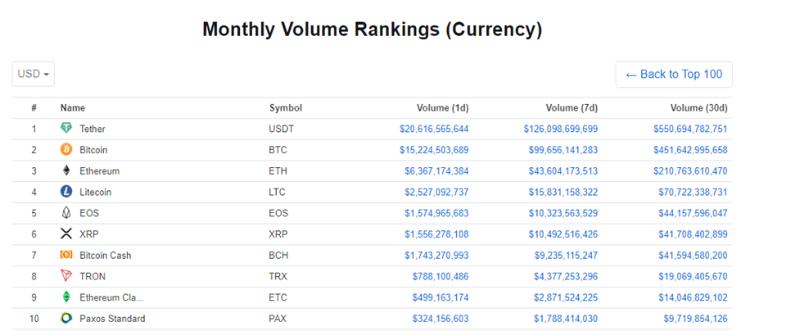
Bitcoin creates a “blockchain 1.0” version of the super application, and Ethereum Relay lays the foundation for “blockchain 2.0”. Ethereum smart contract easy-to-use and Turing-complete functions, as well as the implementation of the ERC20 token standard, let the crowds into the digital currency industry, find an extremely simple way to issue digital currency, resulting in "10,000 coins "The chaos." Therefore, the chain circle (focusing on the blockchain) is very scornful of the phenomenon of mixed currency (digital currency circle). Because the currency circle has not yet been standardized, the participants are still very impetuous, and the digital currency itself has many technical, policy, operational, and security factors, so the digital currency price fluctuates greatly, leading to the value of users. The growing demand for stable and stable digital currencies has prompted the emergence of stable currencies.
In July 2014, Brock Pierce, Reeve Collins and Craig Sellars founded Tether's predecessor, Realcoin. In October of the same year, it released the US dollar 1:1 stable currency USDT, and the 2015 Bitfinex exchange listed USDT (it is said that Bitfinex and Tether have the same CEO). The emergence of the USDT marks the rise of the stable currency. In the following years, the market share of the stable currency has risen year by year. The current market trading share has surpassed Bitcoin, laying a stable currency in the digital currency industry. The stable currency represented by USDT has attracted many currency companies to swarm in and divide the huge stable currency market. This stable currency boom has attracted the attention of two other big players: one is the central banks represented by the People's Bank of China, and the other is the big company represented by Facebook and JPMorgan Chase.
China's central bank joins the war
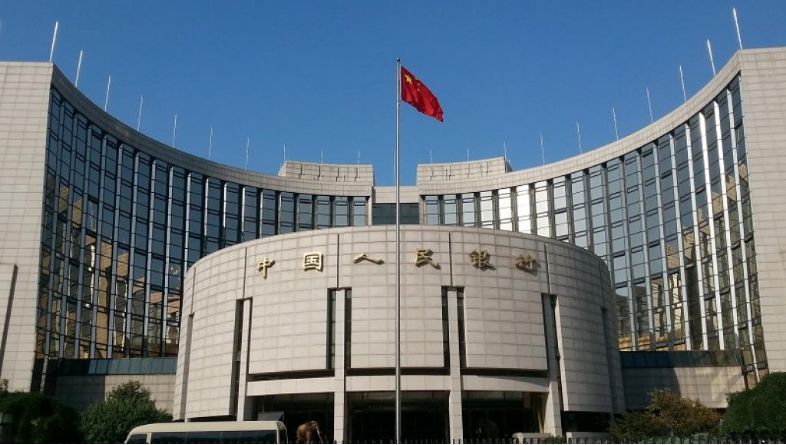
In 2015-2018, the People's Bank of China issued several bans prohibiting Chinese financial companies and payment companies from providing financial services for encrypted digital currencies. On September 4, 2017, the ICO issued a ban on the issuance of Bitcoin in China. At the same time as the crackdown, the central bank is also actively studying digital currency. In 2014, the central bank set up a special digital currency research team to conduct in-depth research on digital currency issuance and business operation framework, key technologies of digital currency, distribution and circulation environment, and legal issues. In January 2017, the central bank officially established the Digital Currency Institute in Shenzhen. In July 2019, the relevant person in charge of the central bank repeatedly stated on different occasions that the progress of the central bank's digital currency was accelerating.
Libra's grand and hard road

In June 2019, Facebook officially announced the Libra white paper after more than a year of preparation. Libra plans to create a global non-sovereign stable currency and a corresponding financial system through an alliance of 100 major companies and institutions, allowing more than half of the world's population to easily pay and settle. It has a wide range of potential users and a wide range of uses, not to mention the unprecedented digital currency industry. Even in the existing financial world, no country or financial institution has ever achieved this ambitious goal. Libra has attracted 28 major companies and institutions including Paypal, Visa and Master to join. The publication of its white paper has aroused the concern of people from all walks of life around the world, and its influence far exceeds the digital currency field. Libra has become a hot topic in the financial industry.
However, because the plan is too ambitious and radical, Libra will inevitably incite the global financial system, undermine the central bank's currency rights, and Facebook's own monopoly in the social field and poor reputation, the national supervision is fully opposed to the Libra plan. Leading to a large number of founding members, opt out before the league is formally established. On October 23, Facebook CEO Zuckerberg went to the US Congress for the second time as the only witness to attend Libra's hearing. He reiterated Libra's vision of establishing a highly efficient global financial system and said Libra needs all US regulation. The agency's permission, otherwise Facebook will not participate in and may even withdraw from the Libra project, trying to dispel the doubts of the legislator. Zuckerberg played Chinese cards in order to promote Libra. He mentioned China and China's central bank many times at the hearing. He believes that Congress should support financial innovations like Libra, making Libra a tool to achieve US hegemony to spread American values. If Libra is blocked, the Chinese central bank will use it in digital currency. The advantage of replacing Libra will soon implement China's set of digital currency systems and standards around the world, seriously damaging US dollar hegemony and American values.
China attaches great importance to blockchain and industrial innovation
On the afternoon of October 24th, China conducted the 18th collective study on the status quo and trend of blockchain technology development and emphasized that the integration and application of blockchain technology plays an important role in new technological innovation and industrial transformation. We must take the blockchain as an important breakthrough for independent innovation of core technologies, clarify the main direction, increase investment, focus on a number of key core technologies, and accelerate the development of blockchain technology and industrial innovation. The application of blockchain technology has been extended to digital finance, Internet of Things, intelligent manufacturing, supply chain management, digital asset trading and other fields. At present, major countries in the world are accelerating the development of blockchain technology. China has a good foundation in the field of blockchain. It is necessary to accelerate the development of blockchain technology and industrial innovation, and actively promote the development of blockchain and economic and social integration.
Simply summarize the history of the blockchain
The World War II radio communication triggered the rise of cryptography and cultivated a large number of cryptography professionals. After the war, a group of people joined the national security agencies and school services, developed a wide range of encryption technologies and blockchain basic theory, and conducted The exploration of early digital currencies. Another group of people pursued privacy and personal freedom, and established a geekpunk geek organization that uses encryption to protect personal privacy. In 2008, the financial turm-induced cypherpunk organization member Nakamoto launched Bitcoin to realize the application of the "blockchain 1.0" version in digital currency. In 2013, Vitalik launched Ethereum to realize the "blockchain 2.0" version in terms of digital currency. Applications. In 2018, the rise of a stable digital currency represented by USDT attracted the participation of the People's Bank of China and Facebook. Just as they motivated each other and competed for the first time to launch stable coins, China decided to use blockchain technology as a breakthrough in core technology innovation and to raise the importance of blockchain technology to another new stage.
Is the Nobel Prize awarded?
Talk about whether the blockchain and bitcoin should win the Nobel Prize.
The digital currency led by Bitcoin has undoubtedly had a profound impact on the world economy. According to the current development momentum, it is very likely that it will meet the Nobel Prize in Economics in the near future. However, the Nobel Prize can only be issued to living people, although many professors want to nominate Nakamoto to be unable to achieve because of their mysterious identity. They can only expect Nakamoto to appear in the future.
In addition to Nakamoto, there is one person who contributes, that is, David Chaum, who lays the foundation for the entire cryptography, blockchain, and digital currency fields. If blockchain technology can continue to evolve and produce more applications that are as far-reaching as bitcoin, then David Chaum is indispensable and is likely to meet the Nobel Prize standard. However, there are physical, chemical, economic, literary, medical, and peace awards in the Nobel Prize, and no blockchain is involved. It can be seen that the setting of the Nobel Prize has been far behind the trend of the times. In contemporary society, new information technologies such as big data, artificial intelligence, and blockchain have increasingly affected human life. The Nobel Prize Committee should regain the courage to add the Economics Prize in the year and add an information award. It is believed that high-tech companies such as facebook, Microsoft, Amazon, Tencent, Ali, and Apple will rush to donate money for the new information award. At that time, David Chaum will be able to take the Nobel Prize in Information Science, or take it with Nakamoto, if he is willing to show up.
Of course, whether or not we win the Nobel Prize, we would like to thank the following people who have made outstanding contributions to technological progress. Blockchain and digital currency have today's achievements and cannot be separated from their great innovations.
1970 James Ellis, public-key cryptography discovered at GCHQ in secret
1973 Clifford Cocks, RSA cryptosystem discovered at GCHQ in secret
1974 Ralph Merkle, cryptographic puzzles (paper published in 1978)
1976 Diffie and Hellman, public-key cryptography discovered at Stanford
1977 Rivest, Shamir, Adleman, RSA cryptosystem invented at MIT
1979 David Chaum, vaults and secret sharing (dissertation 1982)
1982 Lamport, Shostak, Pease, Byzantine Generals Problem
1991 Stuart Haber and W. Scott Stornetta, Timestamp
1992 Bayer, Haber and Stornetta, using Merkle tree in blockchain
1992 Dworkand Naor, combating junk mail
2002 AdamBach, Hashcash
2008 Satoshi Nakamoto, Bitcoin
2014 Vitalik Buterin, Ethereum
We will continue to update Blocking; if you have any questions or suggestions, please contact us!
Was this article helpful?
93 out of 132 found this helpful
Related articles
- Blockchain changes: Do it well, don't come.
- Digital Money and Electronic Payment: Opportunities and Challenges for Global Governance
- Node campaign is just a form, the future effect is the kernel | 8 Q
- China's blockchain ambition: Who is it?
- World Blockchain Conference · Wuzhen second batch of surrounding activities exposed, want to give a ticket to see here!
- The regular army is coming, what should the blockchain industry do next?
- Interpretation: What is the nature of the technology based on the blockchain supply chain?





